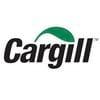Check out what is new in Poultry Industry
Find the best technical articles, forums, and videos on Poultry Industry at Engormix. Enter now and interact with the world's largest agricultural social network.

Magicoh Pellet Binder provides a cost-effective solution to solve your binding problems. In fish/shrimp/prawn feed, it’s used to improve water stability and durability, and in poultry and piglet feed, it can enhance PDI and reduce the production of dust. It helps you produce a pellet rather than dust. Contact me for more information: Email: jzfong@de-mark.com WhatsApp: +8613588089289 WeChat ID: a97896085a ...
Comments : 0
Recommendations: 0
Featured comment:

Litter condition is directly related to water spillage, due to faulty equipment, faulty management, and carelessness. The correct height of the drinkers and the level of water are important.
Nipple drinkers with drip cups work well even in litter if perching is avoided carefully. Leakages, even drop by drop, must be attended to and stopped as soon as found. Selling gut health products should be secondary. ...
Comments : 2
Recommendations: 2
Featured comment:

Your results are very encouraging. Has this research been published in a peer-reviewed journal? If, kindly share the DOI....
Comments : 2
Recommendations: 2

Michael Joseph, Assistant Professor & Extension Specialist at NC State University, discusses the potential and caveats of using alternative protein sources in animal production during this Engormix interview. ...
Comments : 0
Recommendations: 0

In this Engormix interview, Michael Joseph, Assistant Professor & Extension Specialist at NC State University, discusses the use of various combinations of feed additives to maintain gut health and how technology and precision nutrition can contribute. ...
Comments : 0
Recommendations: 0
Growth of the modern broiler is very adaptable to a vast range of diet nutrient densities, and so formulation matrices are greatly impacted by prevailing economic situations. The broiler still eats quite precisely to its energy needs and alters its feed intake in response to variable diet energy level. For example, 25-35d broilers can be fed diets a low as 2850 kcal/kg or as high as 3500 kcal/kg as seen in some locations, and growth rate is little impacted if the bird can adjust its feed...
Comments : 7
Recommendations: 5

Michael Joseph, Assistant Professor & Extension Specialist at NC State University, explains how the food and feed industries are producing more with less, finding strategies to become more adaptable and efficient, in this Engormix interview. ...
Comments : 0
Recommendations: 0
This review, titled "Níveis vitamínicos para frangos de corte" (Vitamin levels for broilers), by Ananda Portella Félix, Alex Maiorka, and José Otávio Berti Sorbara, and published in Ciência Rural, March-April 2009, analyzes current concepts for evaluating broiler vitamin requirements and the levels suggested by both the scientific community and the industry. The core finding is that vitamin supplementation at levels higher than the minimum...
Comments : 0
Recommendations: 3
ARLINGTON, Va. – The American Feed Industry Association (AFIA) is calling on U.S. policymakers, trade officials and the food and agriculture industry to work together on mitigating the potential threat of a U.S. vitamin and amino acid supply disruption. The call comes following the release today...
Comments : 0
Recommendations: 0
Featured comment:
This review provides important insights into the complexity of necrotic enteritis in the post-AGP era. Beyond the well-known multifactorial drivers, NE also raises broader One Health concerns, as shifts in gut microbiota, antimicrobial resistance pressures, and environmental stressors link poultry health to ecosystem and public-health outcomes. Moving forward, integrating One Health strategies—combining microbiome ecology, immunomodulation, environmental management, and precision nutrition—will...
Comments : 1
Recommendations: 0
The demand for "Golden September and Silver October" fell below expectations. In September, the market exhibited signs of a significant recovery, with tentative rebounds. However, in October, the overall market trend shifted from strength to weakness, entering a phase of volatility. The factors driving price increases from the supply side are gradually diminishing. Categories that were previously strong have experienced compensatory declines as the market moved from divergence to consensus,...
Comments : 0
Recommendations: 1
The American Feed Industry Association (AFIA) will once again host its annual Feed Production Education Program on Wednesday, Jan. 28, from 8–10 a.m. ET, during the 2026 International Production & Processing Expo (IPPE) in Atlanta, Ga. The session, organized by AFIA’s Production Compliance Committee, is free and...
Comments : 0
Recommendations: 0
The highly anticipated 2026 Latin American Poultry Summit is set to bring together leading voices from across the Americas to explore the future of poultry production, innovation and sustainability. With a full day of expert sessions, global perspectives and networking opportunities, attendees can expect a dynamic program focused on driving progress and strengthening collaboration within the industry.
The event will take place on Monday, Jan. 26, and will open with a presentation of...
Comments : 0
Recommendations: 0

Andrew Vignati from VICAM explains the effectiveness of lateral flow strips for onsite feed testing. “It’s plug-and-play. Fast, simple, and reliable enough to act.” ...
Comments : 0
Recommendations: 1


Bacillus amyloliquefaciens CECT 5940 (Ecobiol®) go beyond performance in broilers under enteric pathogen challenge compared to antibiotic growth promoter and other commercially available probiotics
Suggested link
The study, "Detoxification of emerging mycotoxins in broiler chickens using an innovative liquid anti-mycotoxins solution," authored by Yusuf Barah, Antonio De la Redia, Guilia Perucatti, Raquel Codina, Giulia Marchesini, J. C. Piantanida, and Iñaki de la Roza , published in Veterinaria (Montevideo), 51, supl. 1 DOI: 10.29155/VET.51.supl3 , addresses the persistent challenge of mycotoxin exposure in poultry production.
The research aimed to evaluate the...
Comments : 0
Recommendations: 0
Necrotic Enteritis in the Post-AGP Era: A Complex Multifactorial Challenge
The restriction on antibiotic growth promoters (AGPs) in the broiler industry has led to a significant resurgence of enteric diseases, particularly necrotic enteritis (NE). This complex disease, estimated to cost the global industry USD 6 billion annually, requires a deeper understanding to develop effective control strategies. A recent review by Shahna Fathima, Walid Ghazi Al Hakeem, Revathi...
Comments : 1
Recommendations: 0
The use of feed enzymes in monogastric nutrition has been a cornerstone of feed efficiency and environmental management for decades. However, a recent analysis suggests that the industry's long-held "scientific dogma" may be limiting the full potential of these additives. In an article on AB Vista's website titled "Enzymes through the ages: rethinking their use in animal nutrition," Mike Bedford (AB Vista) argues that the industry's focus on simple, measurable outcomes has created a...
Comments : 0
Recommendations: 1
.jpg&w=3840&q=75)
Dr. Sudipto Haldar, Research Director at Agrivate Research, discusses key challenges in the poultry industry, including raw material supply issues, and explores innovative solutions like fiber-rich cottonseed meal. He also highlights Agrivate School’s role in bridging the knowledge gap with industry-focused training for both newcomers and seasoned professionals....
Comments : 0
Recommendations: 3


Will New Version of GMP Boost the Veterinary Drugs Industry?
Suggested link
.jpg&w=3840&q=75)
Dr. Bijendra Sharma, a consultant and nutritionist in North India, discusses the essential role of probiotics and prebiotics in maintaining gut health in poultry. He emphasizes the importance of high-quality products for farmers and outlines the bright future of India’s poultry industry, highlighting its potential to become a global protein source. Dr. Sharma also explores how India’s poultry sector can grow and export to Asia and beyond....
Comments : 0
Recommendations: 0
.jpg&w=3840&q=75)
Naresh Kumar Arora (Arora Feed Mills) shares insights on his company's challenges, including manpower shortages and the need for eco-friendly poultry farm structures in India’s extreme climate. He highlights projects like transitioning to controlled environment farms and using AI to detect diseases through bird movement analysis, emphasizing his vision for innovation and sustainable growth in the poultry industry....
Comments : 0
Recommendations: 0














_1.jpg&w=3840&q=75)

.jpg&w=3840&q=75)





.jpg&w=3840&q=75)











